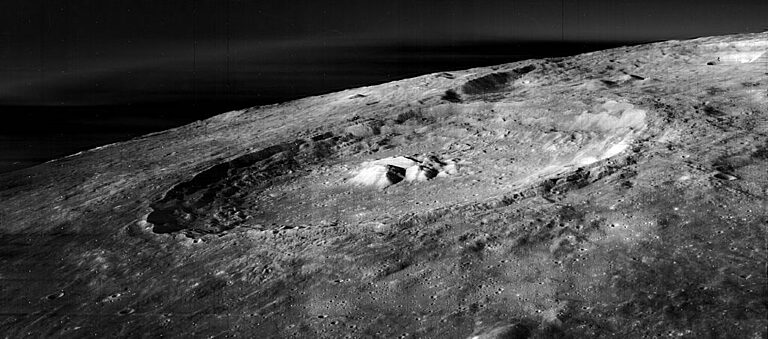Going the distance to get the shot
These days, it's so quick and easy to take and share photos that we don’t even give it a second thought. With a tap of the finger, you can snap a high-resolution picture, send it to a friend, post it online, or even have it printed.
Most of us probably take for granted that spacecraft can send images like the ones featured in this magazine back to Earth just as easily. But space imagery long predates digital photography. So, how did we get photos from space to Earth back then?

The very first photos of Earth from space were taken in 1946 with the same basic technology used by ordinary people at the time: a camera with film. The camera was sent to the edge of space by a group of soldiers and scientists in a durable steel case aboard a decommissioned missile on a suborbital trajectory. After taking photos, the capsule containing the camera crash-landed back on Earth, and the film was retrieved to be developed in a lab using the chemical process we still use to develop film today.
Likewise, Apollo astronauts used specialized cameras to take photos using traditional film that was developed in labs back on Earth. Even early spy satellites carried enormous spools of specialized Kodak film. When the film was full, the satellite would drop the spool in a heat-shielded reentry capsule equipped with a parachute. A plane would then fly by and scoop up the capsule in midair.
The earliest deep-space probes also took photos on film, but because they couldn’t return them to Earth for developing, the imaging teams had to use a bit more ingenuity. The NASA lunar orbiters of the 1960s had ingenious equipment on board to take film photos, then develop the negatives, and then mechanically scan them one line at a time to create an electrical signal. The signal strength varied according to how bright each spot on the image was — a process similar to that used in early fax machines. This codified signal could then be transmitted back to Earth via radio for reassembly as an image by the scientists on the ground.

In the 1970s, the imaging team behind the Viking landers developed a technique that didn’t require film at all. Light entered the camera through a vertical slit, bouncing off a movable mirror through a set of lenses to 12 diodes that were sensitive to different frequencies of light, including optical and infrared. The diodes translated what they sensed into electronic impulses that were transmitted back to Earth. To take an entire photograph, the camera’s mirror would gradually pan from left to right, capturing the entire view in individual vertical strips. This was a slow process; the Viking cameras could only take five vertical line scans per second. A typical 300-degree panorama consisted of 9,150 such lines, taking about half an hour to capture.
The Viking imaging team had some fun with this slow process while testing the cameras on Earth. While taking a group photo, some of the team members waited until the camera passed them in its slow sweep and then quickly ran around behind it to take their place for a second portrait. In the image above, Tim Mutch, leader of the Viking lander imaging team, actually appears seven times.

Space missions in the 1970s and ’80s generally used some form of direct digital imaging similar to Viking, but many still made use of analog systems in the process. The twin Voyager spacecraft were able to take up to 1,800 images per day but couldn’t transmit them back to Earth at that same rate; they had to store image data on eight-track tape recorders that could be rewound and played back to transmit the data later. Modern spacecraft — even as far back as the Hubble Space Telescope, which launched more than 30 years ago — can do all of their imaging entirely digitally and can then transmit data back to Earth via radio signals.
Advances in technology for imaging, data storage, and transmission have worked wonders for space exploration, and today, we’re accustomed to enjoying crisp, clear images sent back to Earth without delay. But it’s worth remembering how far space imaging has come and what it was able to achieve even in its humble beginnings. After all, some of the most iconic space images ever taken were captured on good old-fashioned film.
Support our core enterprises
Your support powers our mission to explore worlds, find life, and defend Earth. You make all the difference when you make a gift. Give today!
DonateThe Planetary Report • December Solstice
Help advance space science and exploration! Become a member of The Planetary Society and you'll receive the full PDF and print versions of The Planetary Report.


 Explore Worlds
Explore Worlds Find Life
Find Life Defend Earth
Defend Earth


